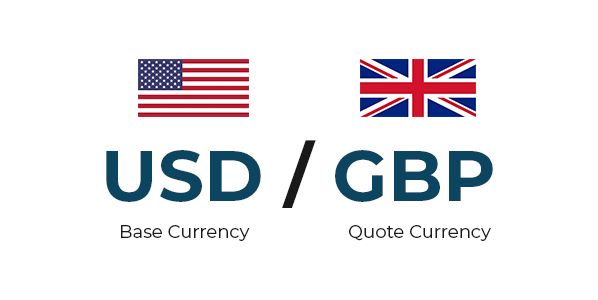Understanding the concepts of base currency and quote currency is crucial for anyone involved in forex trading. These terms help traders interpret currency pairs, make informed decisions, and execute trades effectively. Let’s explore these concepts in detail and see how they influence forex trading.
What is Base Currency?
The base currency is the first currency listed in a currency pair. It represents the amount of the base currency that you are buying or selling. For instance, in the EUR/USD pair, the euro (EUR) is the base currency. This means that if you are trading EUR/USD, you are dealing with euros and comparing them to US dollars (USD).
Role and Importance of Base Currency
-
Reference for Trades: The base currency acts as a reference point for determining how much of the quote currency is required to purchase one unit of the base currency. For example, if the EUR/USD rate is 1.2000, it indicates that 1 euro is equivalent to 1.2000 US dollars. Understanding this helps traders gauge the strength or weakness of the base currency.
-
Price Movement Analysis: The base currency's value relative to the quote currency is essential for analyzing price movements. A rise in the base currency’s value means that the base currency has appreciated against the quote currency. Conversely, a drop means it has depreciated.
-
Trading Strategy: Traders use base currency values to implement strategies such as trend-following, range-trading, or breakout strategies. Analyzing how the base currency performs relative to the quote currency helps in forecasting future market movements and making informed trading decisions.
For practical examples and further details, visit the Forex page on 24markets.com, where you can find information on how base currencies impact trading strategies.
What is Quote Currency?
The quote currency is the second currency listed in a currency pair. It indicates how much of the quote currency is needed to buy one unit of the base currency. In the EUR/USD pair, the US dollar (USD) is the quote currency. If the EUR/USD exchange rate is 1.2000, it means 1 euro (base currency) costs 1.2000 US dollars (quote currency).
Role and Importance of Quote Currency
-
Conversion Calculations: The quote currency provides the context for converting the value of the base currency. Knowing how much of the quote currency is required helps traders calculate the cost of buying or selling the base currency. For example, if you are buying 1,000 euros, you would need 1,200 US dollars if the exchange rate is 1.2000.
-
Impact on Trading Decisions: The performance of the quote currency affects trading decisions. If the quote currency strengthens, the value of the base currency decreases, making it more expensive to purchase. Conversely, if the quote currency weakens, the base currency becomes cheaper.
-
Trading Costs and Profitability: Understanding the quote currency's movements is essential for managing trading costs and maximizing profitability. Traders need to account for changes in the quote currency to ensure their trading strategies remain effective and profitable.
To see how the quote currency impacts trading decisions, explore the Trading Basics page on 24markets.com.
How Currency Pairs Work
Currency pairs are quoted based on the relationship between the base and quote currencies. Here’s an in-depth look at how they function:
1. Direct vs. Indirect Quotation
-
Direct Quotation: This type of quotation shows how much of the quote currency is needed to buy one unit of the base currency. For example, if USD/JPY is quoted at 110.00, it means 1 US dollar is equivalent to 110 Japanese yen. Direct quotations are commonly used in countries like the US and UK.
-
Indirect Quotation: This quotation shows how much of the base currency is required to buy one unit of the quote currency. For instance, if EUR/JPY is quoted at 130.00, it means 1 euro is worth 130 Japanese yen. Indirect quotations are often used in countries like Japan and Australia.
Understanding these quotations is essential for interpreting exchange rates accurately and making informed trading decisions. For further details, visit the Forex page and explore the Trading Tools for additional insights.
2. Major and Minor Currency Pairs
-
Major Pairs: These are the most traded currency pairs in the forex market and include currencies from the largest and most stable economies. Major pairs include EUR/USD, USD/JPY, GBP/USD, and USD/CHF. These pairs are known for their high liquidity and lower spreads.
-
Minor Pairs: Minor currency pairs involve less commonly traded currencies but are still significant. Examples include EUR/GBP, AUD/NZD, and EUR/CHF. While they may offer opportunities for diversification, they can also be more volatile than major pairs.
For a comprehensive list of major and minor currency pairs, check out the Forex page on 24markets.com.
Conclusion
Understanding the distinction between base currency and quote currency is crucial for effective forex trading. By grasping how these concepts work and their impact on currency pair quotations, traders can better analyze market conditions, execute trades, and develop robust trading strategies. For more information on currency pairs and trading resources, visit 24markets.com and explore sections like Forex, Trading Tools, and Trading Basics.







